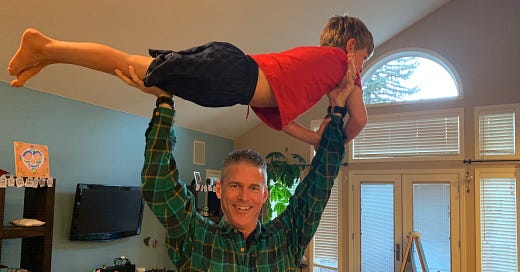By now, you should have a clear idea why John thinks you might not need the gym.
He lays out his reasoning in:
If you’re young, relatively strong and actually do the training that John recommends then you get a pass from what follows.
For the rest of us… read on.
I’m going to explain how to get a big return on investment from ONE HOUR of your week.
Matching The Approach To The Athlete
From Coach Hellemans:
In my experience the choice between a gym or natural environment for strength training is often personality driven. For some, the gym is just not an option which appeals, others love it.
The comes from my sports-medicine experience where I am always keen to find out what type of exercise patients relate to for their health (or rehab). I always include the gym as an option and there is usually a strong like or dislike for that option, making me think the gym either suits or doesn't suit different personalities.
Competitive athletes are more likely to follow their coach's suggestion, even if initially it does not appeal, as they want to do 'whatever it takes.'
Do Work
Those two words capture my advice on your strength program.
I don’t want you to go heavy on long rest.
Move weight, mainly with your legs, then get back to the rest of your life.
The emphasis is not on putting up big numbers.
The main focus is moving weights, primarily with our legs.
The secondary focuses are:
Addressing anything that limits our ability to train
Reducing time lost due to injury.
Falls, crashes and accidents are inevitable. Keeping in touch with our whole-body strength will reduce the impact of life’s inevitable mishaps.
Using The Gym
John’s main critique of the gym is the time is better spent elsewhere.
It’s a valid point, particularly for athletes training less than 12 hours a week, 600 annual hours.1
So let’s make sure your gym program is time effective.
How might we do that?
Limit Rest Intervals
Leave Your Phone In Your Locker
Use Combination Workouts
Limit Rest Intervals - if you come from a powerlifting background then you will believe rest intervals are essential to drive gains.
Well that depends on your goals.
What’s your goal?
Move weight, mainly with my legs, then get back to my life.
Get yourself a little notebook, and a pencil. Track how many pounds you move and how many minutes you’re in the gym. Some examples to get you started: Here and Here. If you click through on the links then don’t worry about the exercises, yet, I’m going to explain everything in future articles.
Most of the year, you do not need to train like a powerlifter. You need to get into the gym, move weight and go home. We’re going to get into the detail later.
When longer rest is required, say, in a winter strength-focus block:
Alternate your set with a mobility exercise, or
Alternate with an upper body exercise.
Always use your gym time with intent.
Skip The Phone - If most of your workout is scrolling social networks then you’re going to prove Coach Hellemans right. I’m counting on you to be time efficient.
No Phone
No Music
Keep It Rolling
We’re doing work, not making a photo documentary.
Where best to place strength training? It. Does. Not. Matter.
What matters?
Loading when we are ready to adapt.
Generating fatigue with intent.
Long term compound gains.
As an endurance athlete, fatigue from strength training is rarely a goal.
Fit it in where it’s most convenient.
Get it done.
Base effort on what’s next, how you’re feeling and what you have in the next two days.
In practice, strength training is nearly always part of a Combination Workout:
Run/Ride to the gym - get it done - Run/Ride home
Tack on after a swim
Inside a do-everything day => ride to the pool, swim, gym, ride home, run off the bike.
How long do I need to train? Aim for 20-30 minutes of focused work.
20-30 reps per exercise split into 2-3 sets
Focus on lower body compound exercises
Focus on total weight moved
Short rest between sets
Specifics to come.
First, create a habit of doing.
Summary
Complexity is holding you back.
Keep it simple.
Get to the gym once, or twice, a week.
20-30 minutes per session.
Move weight, mostly with your legs.
Track minutes and total weight moved.
Lift moderate weights.
Combine with other sessions.
Generate fatigue with intent - you’ll nearly always be holding back.
Consistent application of the above:
Positions for rapid gains whenever a strength-focus block is added.
Preserves lean body mass.
Makes the athlete robust when faced with a crash, or accident.
Back to Table of Contents
The Building Blocks of Lifelong Athleticism is worth reading to help you construct your Basic Week.




